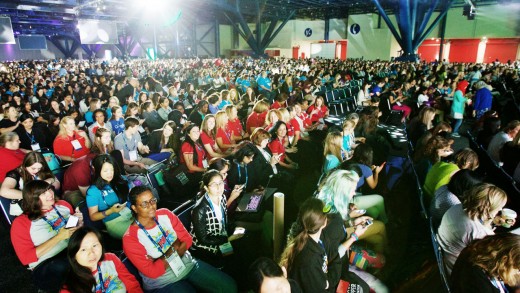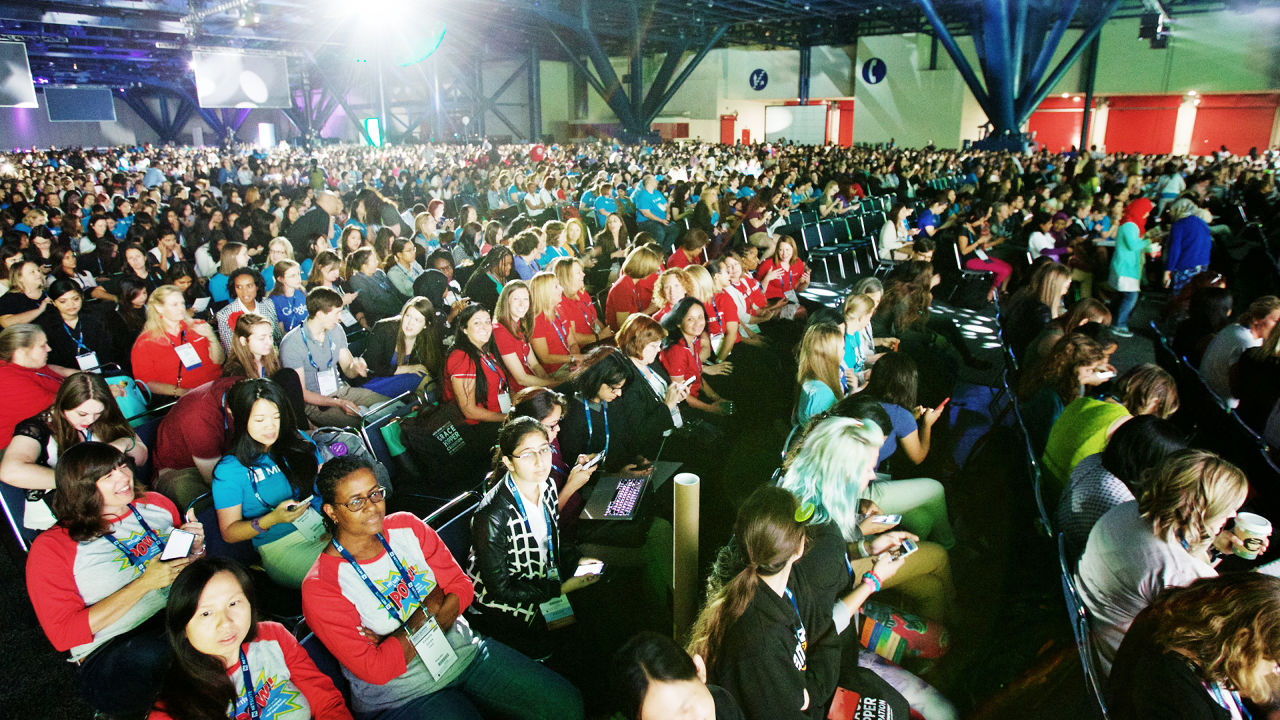Tech’s giant Gender range Push, 365 days In
Is any person making headway on recruiting and preserving more women? at the back of the scenes at the world’s biggest convention for women in tech.
November 19, 2015
“that is the best room on the earth!” Hilary Mason, the founder of information and computing device finding out R&D crew fast ahead Labs, yells enthusiastically as she walks on stage on the Anita Borg Institute’s Grace Hopper social gathering of ladies In Computing.
She’s dealing with a block of neatly lined chairs that stretches the size of more than a football box. Most of these chairs are full, and—remarkably, for a technology convention—most of their occupants (ninety three% of the 12,000 attendees) are girls.

The strange gender ratio makes for an environment that is tangibly totally different from other tech conferences. The business card buying and selling, panel discussions, and conference food are the entire comparable. There’s no giant pink banner that shouts “this is a protected area for girls!” but there are one million delicate cues that collectively create a palpably completely different environment.
As Mason launches into a talk about computer intelligence, her shoulder-length curly hair brushes towards her microphone, and a man in a black shirt rushes on stage to repair it. Mason shrugs. “Curly hair girl problems,” she jokes. The target market laughs knowingly, and Mason continues talking about information science. It’s a relaxed second, and one who’s laborious to think about seeing on stage at SxSW, which normally seems like a networking blitz hosted at a frat house. “It’s exhausting to say particularly and factually what it adjustments,” Mason tells me later about chatting with a crowd with greater than just a few girls, “but it surely modifications the sensation of the room. It changes the best way it sounds when folks snicker. It adjustments the truth that I’m no longer the only one freezing all the time within the conference center.”
You need handiest discuss with the few males at Grace Hopper, who incorporate 7% of the crowd (up from 6% last yr), for affirmation that these differences are powerful. “I’ve never before had to think about being the only man within the room,” Ben Augarten, a tool engineer from Twitter, tells me later.
Telle Whitney, CEO of the Anita Borg Institute, addresses him and the opposite males in the audience all over her opening speech. “Welcome to our world,” she says.

For years, know-how firms actively hid the extent of their variety issues—going as far as to block FOIA requests with the aid of arguing that the gender and race make-up of their body of workers used to be a exchange secret. in the back of the scenes, these same corporations scrambled to find how to increase range.
Google, for instance, created workshops to encourage women to appoint themselves for promotions, supplied longer maternity leaves, and made positive women interviewing at Google interviewed with girls. Microsoft created “mentoring rings” to present its girls extra guidance from senior leaders. In 2008, a Harvard business evaluate report highlighted 14 “progressive applications” focused at growing the illustration of ladies in science, engineering, and know-how. there have been quite a lot of hackathons and dinners for ladies in tech, scholarships, and sponsorship of international girls’s Day.
What went unacknowledged used to be the extent to which the issue remained unresolved.
Then, in 2013, a Pinterest programmer, with the corporate’s approval, wrote a blog publish that revealed 90% of its engineers had been male. Google, Twitter, fb, Microsoft, Yahoo, Amazon, Apple, and LinkedIn adopted go well with in 2014, posting their dismal diversity numbers publicly. Transparency turned into the expected norm.
With these disclosures got here guarantees to adapt, the appointment of chief variety officers, and a whirlwind of recent programs and initiatives geared toward recruiting and holding individuals from underrepresented groups.
however as far as numbers go, little has in fact modified over the last few years. in step with the Bureau of Labor statistics, the illustration of girls in computer and mathematical operations is rather worse than it used to be in 2010 (it has superior somewhat for underrepresented racial and ethnic minorities). the same is correct for the more explicit box of tool builders.
this is a industry drawback. corporations are struggling to rent engineers, period, and not maximizing half of the population’s skill doesn’t help. research suggests numerous teams make better decisions and, in a roundabout way, more cash, and girls regulate the majority of household spending. A lopsided gender ratio does now not bode neatly for making probably the most winning design, advertising, and product selections.
Transparency is a move in the precise path however by no means an answer. Intel, for instance, first made range numbers public greater than a decade ago, and its U.S. gender ratio is almost exactly the comparable as it was once in 2010. companies which have made growth considering the fact that disclosing their numbers in 2014, meanwhile, have done so handiest minimally.
attention toward range in technology firms has never been extra intense. And most likely nowhere are know-how companies’ efforts to address part of this drawback—their low numbers of girls—extra visible than at Grace Hopper. This year 148 corporations, fifty seven educational institutions, and 22 labs, executive, and nonprofit businesses got here to recruit from a pool of about 7,000 girls who work in technical roles and about 3,600 students. The conference is so much the guts of the women in tech dialogue that after companies define their range efforts on promotional web sites, it regularly gets a specific point out.
as the adage goes, the first step is admitting you might have an issue. A 12 months after corporations at last owned up, I went to the convention to seek out out: What’s next?

Grace Hopper’s swag bags bulge with efforts to achieve and rent the ladies who’re gathered right here. among trinkets and flyers from greater than 50 corporations: an affordable white plastic compact reflect from State Farm insurance coverage; a blue plastic nail file from Nationwide; TripAdvisor-branded lip balm; and headphones from both YouTube and Spotify. Rackspace contains hammer stickers (“got glass ceilings? We don’t”), and Walmart guarantees on a pamphlet to “de-bro-gram” the trade. in the future, as my phone battery putters, I fish from the bag a Yelp-branded charging cable that I hook up with a Juniper Networks charging plug.
Recruiters began contacting Grace Hopper attendees months ago, and many of them will host a relentless rotation of preliminary interviews—conducted in a block of navy-curtained makeshift booths—right through the conference.
as a result of people who work at tech companies are basically white and Asian men, they tend to understand networks full of white and Asian men, which means that it’s perfect for them to rent white and Asian men. To widen its pool, facebook has piloted a requirement to interview at the least one qualified candidate from an underrepresented group for certain positions (Twitter has a identical pilot). Google has embedded engineers at historically black faculties as professors. Intel doubles its referral bonus to workers who recommend somebody from an underrepresented team. Efforts to widen this pool are also partly why, despite surroundings apart 325,850 sq. feet of area for the career fair, the Grace Hopper convention has bought out of sponsor space at the event for the primary time in its history.
“Let’s rent all female interns this yr,” muses a recruiter to her associate all through a lunch break. The pair has simply completed inventorying the swag bag, and concluded that it is the absolute best swag bag of all the many occupation gala’s they attend.
Jamie Hand, a senior at Middlebury, has plopped her taco bowl down subsequent to them and is listening with polite hobby. all of the senior ladies in her laptop science division made the travel to Grace Hopper (which is less impressive when you realize that, on this case, that’s 4 individuals). “I’m now not certain about that,” she tells the recruiter about her want to stack the intern class with women. It doesn’t appear fair to her.
The recruiter’s joking demeanor dissolves, and she or he adopts a sudden maternal seriousness—what’s unfair, she says, is how so much the deck is historically stacked for males. “it is so simple to rent men,” she tells Hand. “everything flows that approach.”
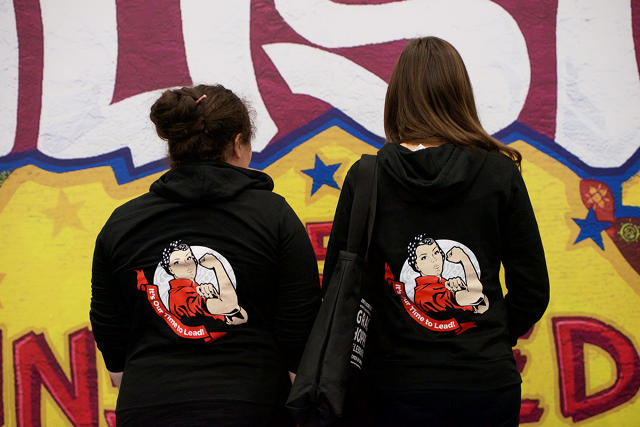
An alien with no information about society or historical past (or in all probability a male professor of laptop science at Yale in 1999) might have a look at the dearth of women in technical fields and assume something like David Gelernter did when he published this sentiment in an argument against affirmative action: “If ladies don’t seem to be being saved out of science through power, they should be selecting not to enter, presumably as a result of they don’t wish to; most likely as a result of (by and massive) they do not like these fields or (on moderate) do not are inclined to excel in them, which is sort of the identical factor.”
but we all know better (I contacted Gelernter to see if his pondering had evolved within the final sixteen years as neatly, and he defended his stance on affirmative motion however didn’t reply to this quote particularly). we all know, as an example, that both men and women associate STEM fields extra strongly with males. we all know girls are much less prone to obtain credit score for his or her contributions. we know ladies usually tend to be given bad feedback on their character—abrasive, strident, aggressive—through each female and male supervisors. And we know that in a study through which science school were given the same resumes with female and male names, they concept the men more ready and offered them a revenue $4,000 higher.
If there’s a root result in at the back of girls’s underrepresentation in tech—one who contributes to the leaky pipeline, the non-inclusive tradition, and the retention drawback—there’s convincing evidence that that is it: implicit bias.
unfortunately, bias hasn’t created just one problem that may be neatly repaired. as an alternative, it has struck the pipeline just like the scattershot of a musket.
“There are all these holes far and wide,” says LinkedIn’s director of engineering increase, Erica Lockheimer, who runs the company’s engineer-pushed girls in tech initiative as 20% of her job. “And we’re seeking to plug them here,” she plops her hand on the desk to indicate an imaginary leak, “and here and right here and right here.”
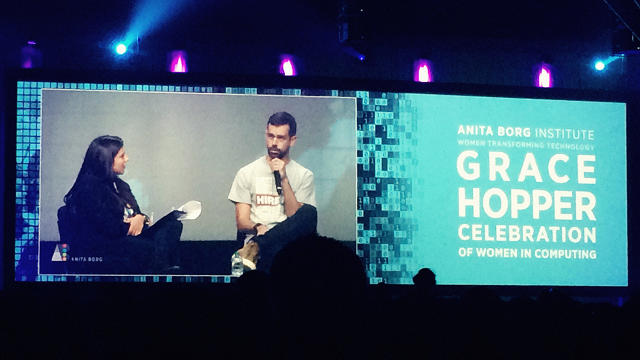
It’s been 10 days in view that Jack Dorsey was once named the CEO of Twitter, two days on the grounds that Twitter laid off 8% of its personnel, and in the future when you consider that his funds company, square, made its preliminary public providing prospectus public. nonetheless, he is made it to Houston to participate in a panel about “Fixing the Leaky Pipeline” with Chelsea Clinton, the vice chair of the Clinton basis, and Maxine Williams, the worldwide variety director of fb. He’s sporting a “hire Me” T-shirt (which comes off as a little bit ironic) to beef up a new effort from ladies Who Code, whose CEO, Reshma Saujani, moderates the panel.
Dorsey has had, to put it flippantly, a very fast-paced few days. showing up itself is a message in regards to the significance of Grace Hopper, and with the aid of extension, gender variety. square has no longer released variety numbers however has a few women in key leadership positions; of the tech companies who make diversity knowledge public, Twitter has probably the most lowest charges of girls in technical roles. Dorsey insists, however, that he values a various body of workers.
“Any time you carry together numerous perspectives, it simply creates a bunch of doable that you simply weren’t actually expecting,” he bargains.
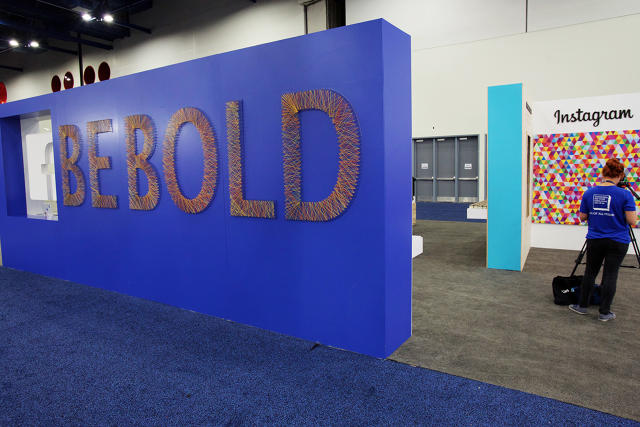
at the same time as males like Dorsey and ladies like facebook’s Williams talk about efforts to convey extra ladies into tech, the trade continues to be a difficult position for the women who’re already there. ladies who work in science and tech are forty five% extra likely to leave the industry than their male peers. Nadya Fouad, a researcher at the university of Wisconsin-Milwaukee, surveyed 5,300 girls who graduated with engineering degrees between 1980 and 2010 to figure out why they have been leaving in droves. folks who left, her analysis confirmed, suggested much less manager reinforce and had been less prone to really feel as though they’d truthful alternatives for advancement. “We wished to indicate, are they leaving or being pushed out?” Fouad says. “Our knowledge displays they have been being pushed out.”
The harm this culture has brought about is obvious at Grace Hopper. all through the Q&A that follows Dorsey, Clinton, and Williams’s panel, a young women takes the microphone: “i have now not a query, but a suggestion,” she says, her voice already starting to crack. “This summer season, at my internship, i discovered the interns did simply as a lot damage to folks from underrepresented backgrounds as their groups and their bias supervisors. If we’re speaking about implementing coverage and imposing bias training, we want to begin early. And educate the interns.”
It’s painful to listen to the battle in her voice. “i’m hoping you are taking this again to facebook, sq., and Twitter, and teach them what bias is and the way you damage the individuals round you.”
The room bursts into applause.
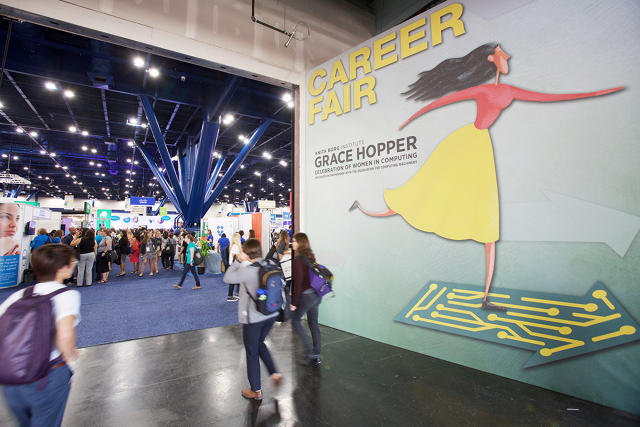
“We simply needed to come as much as you and tell you that we beloved your speak a lot,”a school student from India who has flown in to attend Grace Hopper tells Mason, the lady who gave the outlet keynote.
Mason, who in her keynote described herself at her first Grace Hopper in 2002 as “a shy and quiet pupil who hid in the again and used to be frightened of asking questions,” is clearly touched, but unaccustomed to having these fan-like encounters.
“might we through any probability get a picture with you?” the lady’s friend sheepishly asks Mason.
Mason, though she might not be used to rock celebrity therapy, is obviously a rock superstar: the kind of senior chief that many companies want to hire. that would be real whether or not or now not she were a lady. but despite the fact that she weren’t already constructing her personal company, she would be not likely to join firm and not using a ladies or minorities in leadership roles. “nobody needs to be the first girl on a tech group,” says Sara Chipps, the co-founder and CEO of a company referred to as Jewelbots that makes programmable friendship bracelets for girls. “I’ve been there, i do know others who’ve been there, and it’s bad.”
ladies drop out of companies at every degree of know-how, but the disparity in the charge at which they drop out at the prime is more jarring. Mason and Chipps didn’t leave tech, however they did depart dependent tech firms to start their very own. That’s awesome for the world, however bad for the tech firms who need to rent them.
“women on the senior stage are beacons for other women,” says Elizabeth Ames, the Anita Borg Institute’s senior vice chairman of promoting, alliances, and applications. “for those who go interview at a company and there is no person on the senior level who appears even remotely like you, is that a place where you think you can be comfy or in a position to succeed in?”
So lest their swag, speakers, or the giant shows under which they gather resumes be missed, companies have also upped their feminine presence on the bottom at Grace Hopper. Microsoft despatched 800 workers. Linkedin introduced one hundred ladies, up from forty final 12 months and 20 the 12 months sooner than. Symantec (with Veritas, which has been operationally unbiased from Symantec considering that October 1) brought 215 girls, up from 25 the year prior to. below a sign that says “howdy from HQ,” facebook has posted pictures of the ladies on its groups. many of the actual, in-person versions are parked in front of the signal, speaking with young recruits. Macy’s posts an indication that says, “26% of our engineers are feminine,” which in this industry nonetheless passes for impressive.
It’s a predicament: Hiring girls in management positions is essential to selling diversity across the corporate. but many women eligible for management positions understandably don’t need to work in non-numerous cultures.
I ask Mason about this—would she do it? Would she consider a job with a bunch of white dudes? “No,” she laughs, for the reason that solution is plain. “possibly they’re screwed and it’s a problem they created. but if it were an ideal work environment, they’d be capable of entice a various group of workers.”

So how can a company entice a diverse workforce with out diversity?
Tech firms have tried to repair the pipeline: to partner with companies like ladies Who Code, display that pc science isn’t just for boys, exchange Hollywood’s portrayal of scientists. they have tried to fix some leaks in the pipeline: to create mentoring and networking alternatives for women of their corporations, give scholarships to girls in computing, and create engineering-led job forces. they’ve tried to fix their hiring practices: to alter the locations they recruit, reword job descriptions, and raise referral bonuses to reward range. they have tried to repair their culture: instituting implicit bias training, growing programs like a pilot from LinkedIn referred to as “inclusivity training.”
however they have got but to land on a superb second step.
On webpages outlining range efforts, sponsoring ten women to attend Grace Hopper or promoting of international girls’s Day (both good!) are nonetheless listed as severe efforts.
When Forbes asked facebook’s Williams in regards to the movement to promote variety throughout the trade, she informed him, “I don’t be aware of that there’s a motion happening throughout the trade.” A conversation? “sure, but that conversation most effective came about when the implications received launched, which for us used to be a non-event, as a result of by the point the implications got released, we have been already in this movement internally.”
On day two of the conference, I attend a panel called “continue and strengthen Your top proficient ladies Technologists: Three firms share research about applications with confirmed outcomes” with hopes of clarifying the question of what efforts to recruit and maintain girls are working.
There are four panelists. One is an former government of Microsoft named Lauren Antonoff (she is now at GoDaddy) who, without any price range, began a software to improve women inside the company who were candidates for a “managers of managers” position. “We had a clear intention,” she says, “and the purpose was once to increase the illustration of ladies in this explicit position.” 4 of the ladies within the pilot, about as many as have been in this position overall prior to the program started, ended up being hired to be managers of managers before the it ended. rapidly after, two extra have been promoted to the role. Microsoft has since accelerated and formalized the program.
another pair of panelists co-based PWC’s program for women, girls In know-how (WIT), which started as a grassroots effort and now includes mentoring programs, conferences highlighting know-how options and leaders, events and forums, speaking opportunities, and recruiting situations. About 1,400 people participate in one way or some other. The fourth panelist, Molly Gantz—a talent and building director at Thompson Reuters—speaks a few construction software for top-potential girls called Leadhership1.
All three applications are spectacular (especially people who launched despite the shortage of a price range), however I nonetheless can’t lend a hand seeing them as small drops in enormous buckets.
other companies, like Intel, have commendably dedicated a whole bunch of thousands and thousands of greenbacks to range programs—but even those efforts really feel reasonably token whilst you imagine the billions of greenbacks of income these companies pull in.

At many companies, diversity efforts get misplaced in the day-to-day force to deliver. “range is a sub-intention for most companies,” says Jim McKelvey, the cofounder of sq., who now works on an apprenticeship program called LaunchCode that locations programmers with unconventional credentials at more than 300 corporations. “the primary job is to get it done. So if the corporate desires a work product, and the people who could do that work product are all, pick whatever stereotype, let’s say they’re a bunch of white guys. If that’s what’s going to get it executed, that’s what is going on to get carried out.”
“That’s quick-term thinking” McKelvey continues. “as a result of when you construct a monolithic team, it will end in homogeneous pondering. And it’s no longer as durable as a culture that includes various diversity. nevertheless it’s exhausting to graph that worth in an emergency scenario. You just want any individual who can write this Java applet, and anyone is available in; you don’t care what they look like.”
Clear goals are one way to firmly connect variety to lengthy-term trade interests and have interaction managers in the process. “In business,” says Cecily Joseph, Symantec’s vice chairman of corporate responsibility and, as of two years in the past, its chief diversity officer, “you’re making goals around everything that’s important. when you don’t make objectives, you gained’t do it, and it’s not necessary.”
Publicly, Symantec goals to “elevate the range of its workforce, at all ranges throughout the firm, by means of 15 p.c by means of 2020.” Internally, it began with an formidable quick-time period precedence to have a board composed of as a minimum 30% ladies. because the board started its seek for open seats, they regarded as candidates who had now not been CEOs and failed to report to CEOs to avoid mechanically limiting the number of candidates who had been from underrepresented teams. In October 2013, the company introduced two certified girls to its board and met its intention. Now, it has set a identical inside goal to lift representation of leadership at Symantec to 30%.
Smaller firms, which can extra speedy change the make-up of their staff as they develop, are extra easily able to show the facility of treating variety as a goal-oriented trade goal. probably the most bold instance i discovered at Grace Hopper used to be ThoughtWorks, an organization of about three,500 staff throughout 13 international locations that makes a speciality of tool consulting, delivery, and merchandise. In 2010, when it had about 1,500 workers, it set a purpose of enrolling 50% ladies into its onboarding process for brand new hires right away from school, a six-week software hosted in India.
but ThoughtWorks had the same drawback as everybody else: handiest 18% of computer science graduates in 2010 have been ladies.
What made it easier for ThoughtWorks to meet the purpose used to be that it considered candidates with nontraditional credentials. Biology college students, for example, steadily had some exposure to code via their classes. Like many laptop science graduates, they might not be versed in the specific languages they would want for the job, however, as with the computer science graduates, that may be fixed. After the six-week introduction route, new hires are enrolled in a training and mentoring program for 2 years.
With this approach of taking into account unconventional credentials, the company successfully made its 50% goal the first 12 months. all over North america, 34% of ThoughtWorks’s technical roles are stuffed via girls. remaining year, 40% of all new hires were girls.
ThoughtWorks’s program was once driven through a want to construct higher merchandise and to hire for technical roles in a aggressive surroundings, however its goal of filling its training application with 50% ladies helped formalize inclusivity. “on the finish of the day, girls in computing have to look a path and really feel they belong there,” says Joanna Parke, the company’s managing director in North america. “It’s fuzzy and tough to quantify.” however the purpose, she says, “set a clear message that we were thinking about it. the other factor it did is force us to get inventive. that you can’t just post a job and predict to meet it.”
Pinterest, Intel, and Twitter have also set variety targets publicly. Most different large tech corporations have now not and weren’t weren’t prepared to talk about why.
here are responses from the few who would talk about it: “One thing diversity authorities would say is important when serious about recruiting is to take into consideration diversity of (job candidates) versus best effects of the method,” says Lisa Dugal, the variety chief at PWC. “the overall purpose is get extra variety. Which of those two levers you center of attention on will give you two different mindsets and effects.” LinkedIn (which this 12 months made comparatively huge growth when it noticed girls’s illustration in technical roles elevate 1% and in leadership roles elevate 5%) sends me a observation that says, “whereas we want to prolong the variety of our worker base, interviews are indirectly according to benefit. we do not set necessities related to variety.” And with reference to explicit targets, “We aim to build the best teams that are made from a diverse makeup, however we do not method this intention with any set hiring quotas.”
Some kinds of intention-environment can be counterproductive. In a study revealed in the American Sociological evaluate in 2006, researchers looked at the diversity applications at greater than 708 corporations and concluded that range reviews, wherein managers got a proper ranking once a year for achievement in promoting diversity, had certain effects for white ladies however negative effects for black males (range coaching additionally backfired). “we predict that incentives determine what people do on the job,” says Frank Dobbin, some of the find out about’s authors, “but incentives can turn people off by means of sending them the signal that they’ve to be bribed to do one thing they otherwise may do naturally.”
but targets don’t wish to be quotas. Between 1995 and 2004, IBM increased its representation of feminine executives worldwide via 370%. Former CEO Lou Gerster mentioned in a case find out about by the Harvard trade assessment that the driving force of the corporate’s success at increasing its diversity used to be that “we made diversity a market-primarily based issue.”
“We didn’t set quotas,” he stated later within the article, “but we did set goals and made folks privy to the individuals of their gadgets who they wanted to be in charge for creating.”

“So. You sparked a global dialog and dragged this elephant in the room into the sunshine,” starts Nora Denzel, vice chair of the Anita Borg Institute Board of Trustees, who is interviewing fb COO Sheryl Sandberg onstage at Grace Hopper. Sandberg’s e book in regards to the challenges ladies face at work, Lean In, used to be liked, hated, and, most helpfully, broadly discussed after it was once published in 2013. more than 24,600 people in 126 international locations have registered for small peer-fortify groups on its web site.
“the whole lot is glorious, apart from for one thing,” continues Denzel. “The numbers aren’t transferring.”
Sandberg doesn’t omit a beat when introduced with this awkward query, the new elephant within the room. “No problem has ever been solved via considering we are able to’t remedy the problem,” she says. “So after all we are able to remedy the issue.”
the rest of the interview is peppered with polished anecdotes, jokes, and information that she has delivered often all over different media appearances: girls who’re extra successful tend to be less appreciated. males who’re successful tend to be better liked. Little ladies aren’t bossy, they’ve govt leadership talents.
but towards the top of the talk, Sandberg goes off-script.
“keep in tech,” she says to Grace Hopper’s attendees. “stay in tech. Tech wants you. facebook needs you, Google wants you, Microsoft wants you. we all need you. “
regardless of her position because the de facto spokesperson for the difficulty, the COO of facebook doesn’t have all of the solutions to tech’s diversity problems, either. She appears into what is slightly possibly the largest crowd of women in computing ever gathered, and she pleads.
related: how one can start Fixing Tech’s range problem
[pictures: Steve Maller, courtesy of Anita Borg Institute]
(43)

